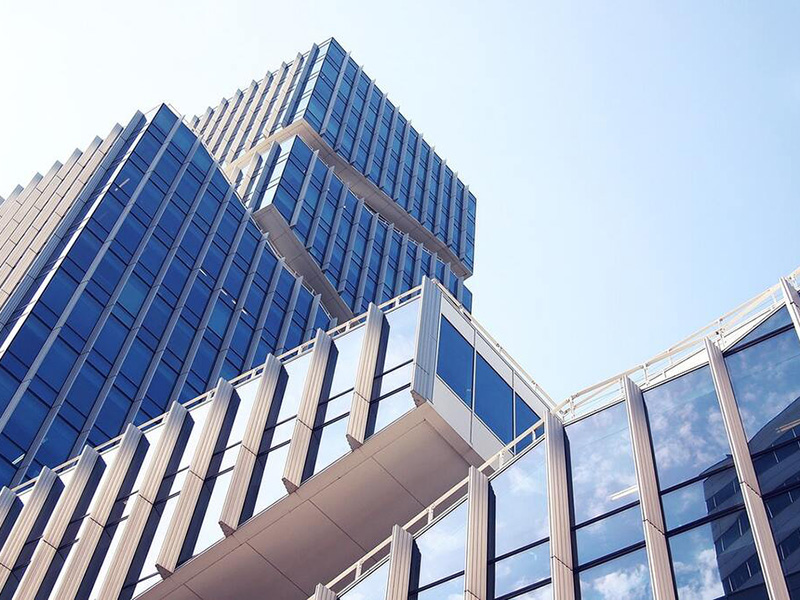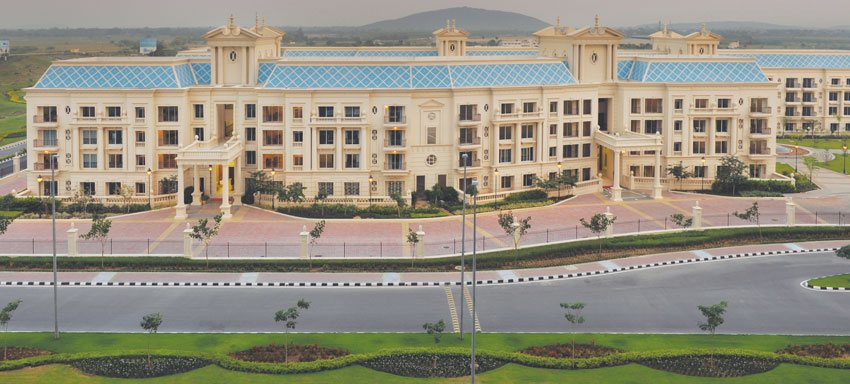
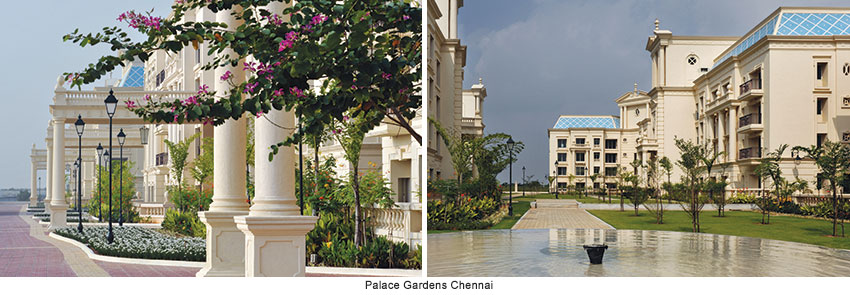
V Suresh, Housing and Urban Development Specialist, (Director, Hirco Project Companies, and Former, CMD of HUDCO)
Introduction
"Housing for all" has been identified as a priority area in the National development programmes.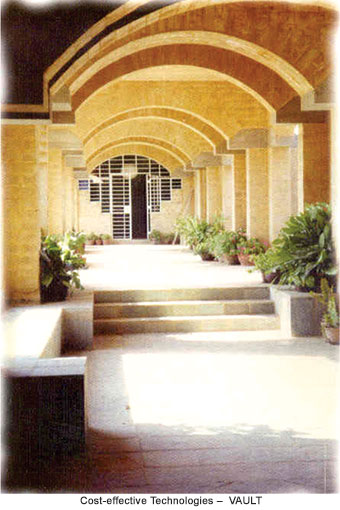
Therefore, there is a need to adopt strong, durable, functional, aesthetic environment-friendly, ecologically appropriate, energy-efficient and yet cost-effective materials and appropriate technologies in construction.
Policy Frame Work
The National Housing and Habitat Policy aims to ensure the availability of affordable shelter to all and hence a better quality of life for all citizens. Outlining the role of research, standardisation and technology transfer institutions, the National Housing and Habitat Policy emphasises on the development of alternative materials and technologies responsive to the climatic conditions. The policy emphasises on the use of climate responsive design, local materials, renewable resources, disaster resistant technologies and ensuring energy efficiency in construction. The facilitatory measures solicited include the establishment of appropriate standards, extension of adequate fiscal concessions and creation of awareness and acceptance through effective delivery systems.Use of Appropriate Technologies
The institutes and bodies involved in building materials research and development include the laboratories of Council of Scientific and Industrial Research (CSIR), including Central Building Research Institute (CBRI), Structural Engineering Research Centre (SERC), National Environmental Engineering Research Institute (NEERI) and Regional Research Laboratories (RRL) in addition to other institutions such as Centre for Application of Science and Technology in Rural Areas (ASTRA Bengaluru), Development Alternatives (DA), The Institute for Solid Waste Research and Ecological Balance (INSWAREB Visakhapatnam), Centre of Science for Villages (CSV Wardha), National Council for Cement and Building Materials (NCCBM Ballabhgarh), India Plywood Industries Research Institute (IPIRI Bengaluru), Forest Research Institute (FRI Dehradun), Indian Jute Industries Research Association (IJIRA Kolkata), COSTFORD (Thrissur), COSTED (Chennai), CSR (Auroville) and other State level Institutes. These premier Research & Development bodies in the country and creative professionals like Laurie Baker have come up with numerous innovative options which can contribute to cost reduction and at the same time which offer solutions which are durable, functional, acceptable and yet aesthetic and contribute to sustainable development.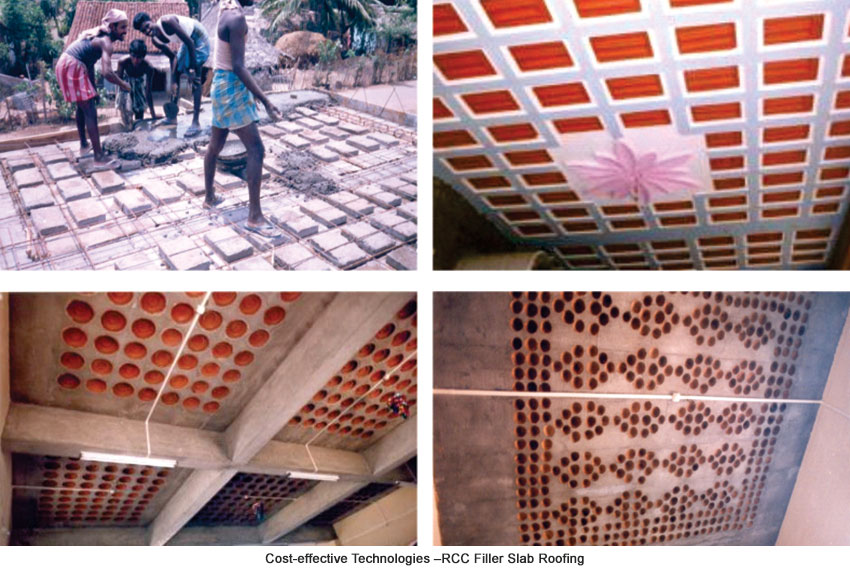
Environment Friendliness
Built environment in cities, towns and villages have to take into account the environmental impact of any new development on the natural environment namely land mass, water bodies, hydraulic paths and the green cover. The Master Planning stages for the development of cities need to take care of these elements for 'development' to be in consonance with 'environment' and not in divergence or cross purposes with environmental health. The new developments also cause new sources of environmental challenges due to the developmental outfalls, namely polluting gases, liquid and solid wastes discharged into air, water, land and its after effects on local micro climatic conditions. Very rarely have Indian cities demonstrated the need for creating sustainable cities, keeping in view the various natural elements and environmental scene. Lately, there has been an increasing respect for water bodies like lakes in Bhopal, Kolkata, Hyderabad, Bengaluru, etc after substantial damages have already taken place. Indore is a good case for preparing the Master Plan, keeping in view the various natural elements.The very development process of housing, building and infrastructure construction depend on natural resources of minerals, soil, rock, forest for their source as building blocks. This is where the maximum impact is felt, be it for river sand, earth for bricks, forest for timber and fuel for material manufacture. Equally important is a prime source of water supply which is the lifeline for the sustenance of any built environment. It becomes a challenge for the Planners, Engineers, Architects, Public Health Engineers, Transport Planners, Hydrologists and Environmentalists to evolve a sustainable built environment in harmony with nature and natural resources.
At the same time, with the rapid increase in population and the consequent increased requirement of food production make it mandatory to have increased fertile cultivable areas. Construction activities cause significant damage to the environment on account of the removal of fertile topsoil for brick manufacture, mining and quarrying activities, unscrupulous extraction of precious sand and silt from the river beds, indiscriminate lumbering and the use of the scarce primary forest resources. Further, the production processes for conventional building materials are also energy intensive besides contributing to global warming due to the emission of green house gases and CFC elements.
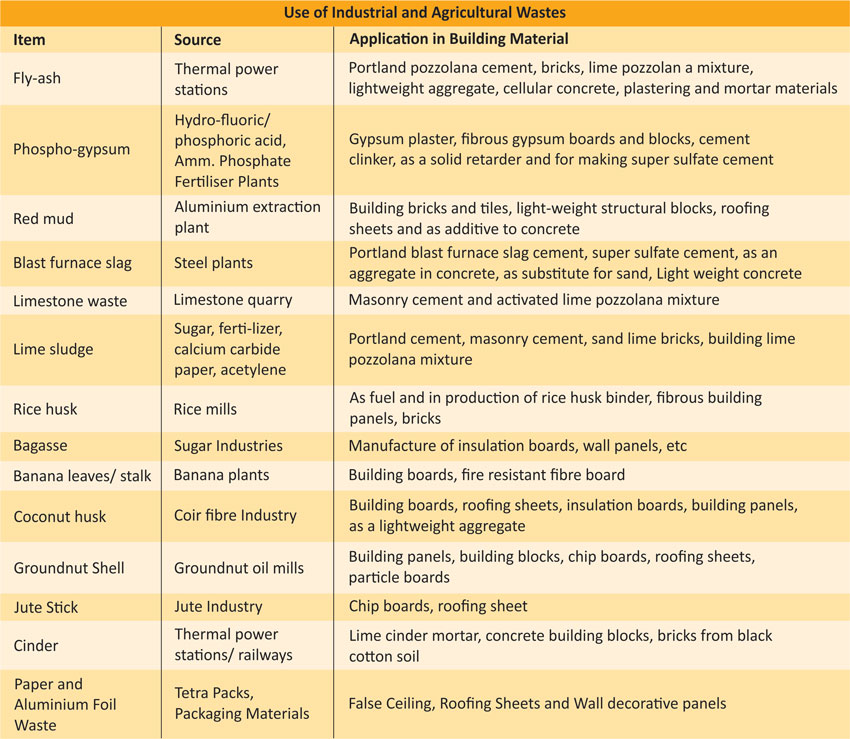
Utilisation of Waste Materials
The utilisation of agricultural and industrial wastes such as bagasse, coconut husk, sisal, flyash, phospho gypsum, blast furnace slag, red mud etc. in the manufacture of building materials needs emphasis in this context.The appropriate utilisation of agricultural and industrial wastes in the manufacture of building materials with a 'waste to wealth' or 'refuse to resource' or 'trash to cash' approach needs to be emphasised to take advantage of dual benefits. The National Housing and Habitat Policy lays special emphasis on promoting these environment- friendly alternative materials in order to reduce environmental damage and bridge the gap between demand and supply of traditional materials. The following table gives a suggestive list of waste materials with their potential applications in construction industry.
Disaster Resistance
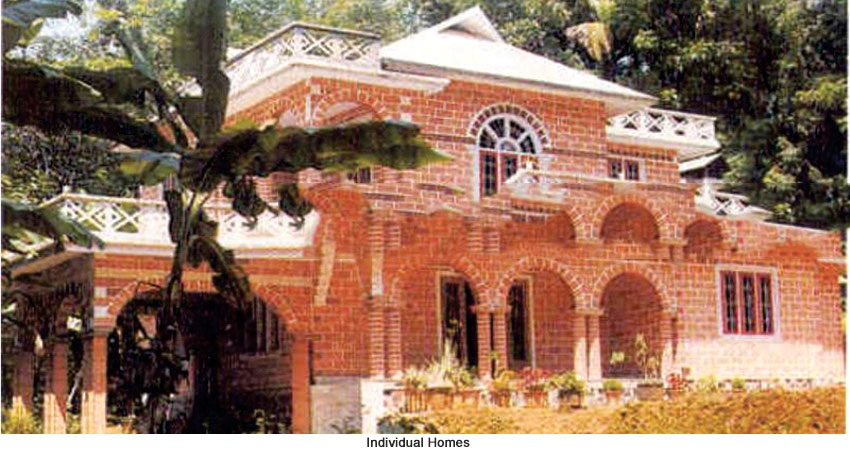
The large-scale vulnerability of the land area and frequent recurrence of natural disasters in our country especially has raised the question of safety of the habitat in the face of earthquakes, landslides, cyclones, floods, fire, and sea erosion. The design of shelter appropriate for varying bio-climatic environments, geo-lithological conditions and topographic profiles pose a daunting challenge in the provision of housing and community asset buildings. This is particularly significant in a country where nearly 30% of the land area is under black cotton soil, whereas the urban sprawl is often concentrated on newly reclaimed land calling for appropriate technological interventions in structural and foundation designs.
Emerging Technologies
The globalisation of trade has resulted in hastening the speed of penetration of technological advancements into housing and building construction sector. Modern technologies for construction such as NO-DIG or trenchless technologies, Water Jet technologies, use of Fly Ash, concrete admixtures and additives, Ready Mixed Concrete, Slip Form and Tunnel Form construction, prefabrication, use of composite materials and construction systems etc. are making inroads into the construction sector. The necessity of building at the rate of 10 million houses every year needs a different strategy towards optimizing the speed, cost and quality of construction.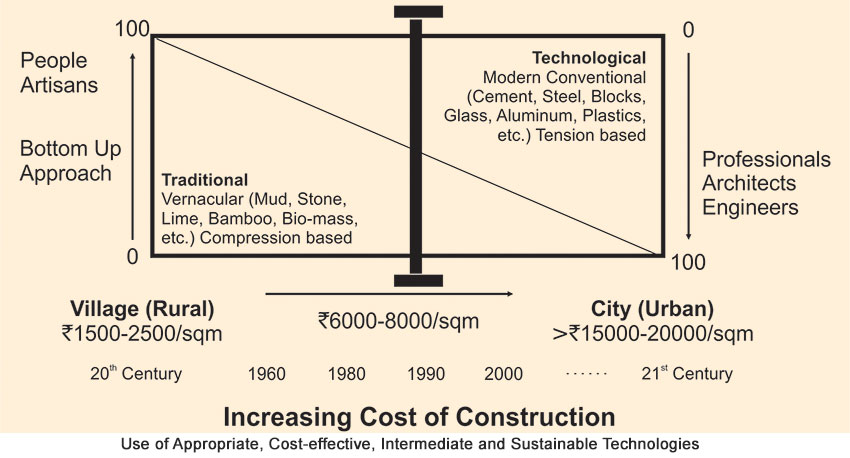
It is also necessary to insist on life-cycle costing in building construction projects taking into account both the capital costs of construction and maintenance costs as well disposal costs during the period of operation and end of life of the asset. It is necessary to insist on state-of-the-art technologies that offer the least maintenance costs and provide the best of quality and durability.
Approach to Adopt Appropriate Technologies
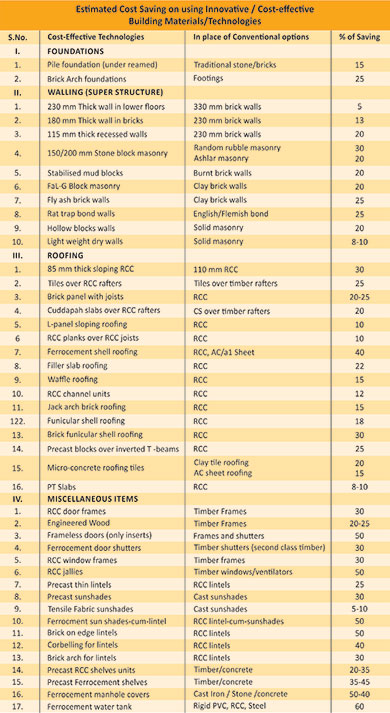
This calls for a people-oriented bottom-up approach striking the right and sustainable balance between the intermediate, vernacular and innovative technologies for the larger needs for optimising the construction costs. This will lead to a balance between "traditional" (vernacular) practices and the conventional "technological" options and to adopt intermediate, cost effective, appropriate and sustainable technologies.
It is imperative to tilize the large number of cost-effective options for foundation, walling elements, roofing elements and timber substitutes especially for joinery. An illustrative list of cost-effective technologies with the amount of savings in cost envisaged as against the conventional options is highlighted in the Table:
Sustainable Technology: Awareness, Application and Propagation
It is noted that most of these technologies have not found much penetration for application in the construction industry due to various historical reasons and lack of proper awareness, appreciation and gaps in application efforts. BMTPC/HUDCO has made some efforts. A conscious effort to close the gap in "taking technologies to the doorsteps" by instituting an appropriate grass-root level technology transfer mechanism was taken through the earlier Building Centre Movement.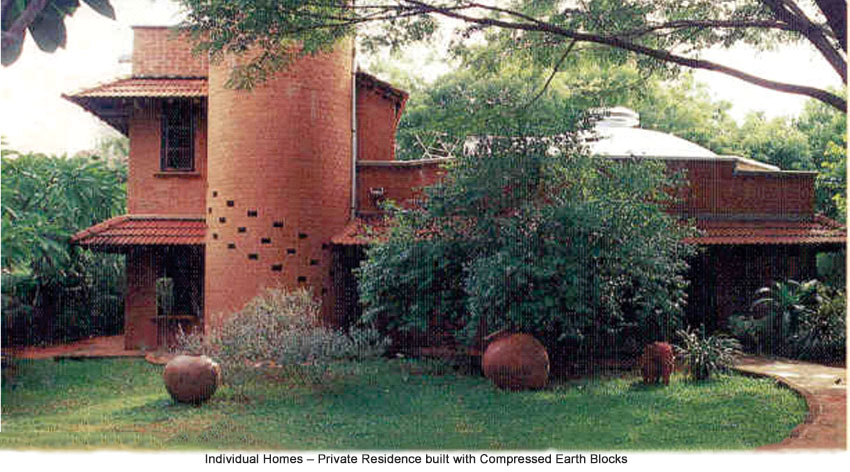
The Building Centre movement has been successful to ensure:
- technology transfer from 'lab' to 'land' and impact
- skill upgradation and training to the artisans (masons, carpenters, bar benders, plumbers, electricians, etc.) on innovative and cost effective technology options
- production of various cost effective components using resources and sales out-letting the same
- construction of housing and buildings using the trained work force and the produced components as a cost-effective building system
- giving necessary housing guidance, information and counseling to the people on the proven innovative, cost effective and appropriate building materials and technology options.
The Way Forward in Appropriate Technology Dissemination for Application
Building Technology Exposition, Building Technology Parks, Housing Guidance CentresThere is need for extending the fruits of research and development in building technologies to suit the needs of individual and group home builders, professionals and others through the Housing Guidance Centres and expositions in all State capitals. This should be open throughout the year for the general public to visit and familiarise with the building technologies. Such permanent Expositions could be put up by State Housing Agencies/ professional associations / R & D institutions and other agencies on a continuing basis in all State Capitals and over a period of time in all important cities. This helps in taking appropriate technologies closer to the people. The Building Technology Park at Mansarovar in Jaipur by Avas Vikas Sansthan is a good example for creating awareness and appreciation of various appropriate technologies among the general public. 'Seeing is believing', seem to be the guiding principle behind these awareness creation initiatives.
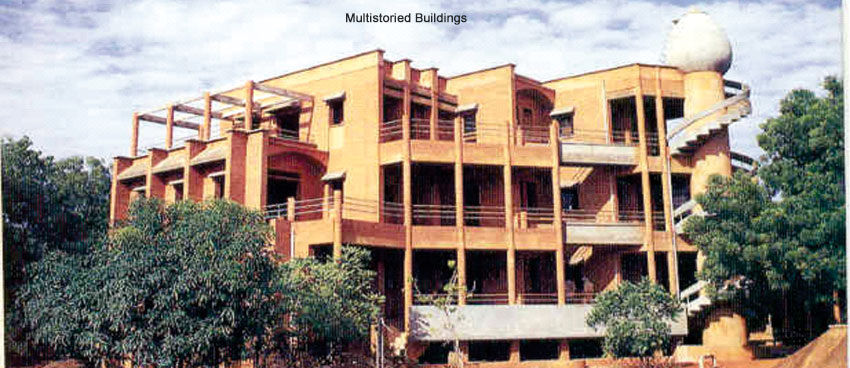
Upgrading educational curriculum of Technical courses
It is generally noted that most of the innovative and cost-effective building technologies are not given exposure to the practicing Architects, Engineers and Supervisors, leave alone the construction artisans. It is absolutely essential that the curriculum at the graduate and diploma / certificate level of engineering and architectural courses should be upgraded to provide for all the cost effective building materials and appropriate technologies and innovations in designs, materials and application, in the syllabus. In addition, it is also desirable to give at least six months to one year practical exposure on actual field situations as part of the educational curriculum, before degree is conferred. There is an urgent need for action by Council of Architecture and AICTE and State Directorates of Technical Education for upgradation of the curriculum at the graduate and diploma level.
Incorporation in Schedule of Rates and Standard Specifications
The use of alternative building materials and technologies in public infrastructure and community asset buildings constructed by agencies such as CPWD, MES, Railways, State PWD, Housing Boards, etc., and other public sector institutions as well as building centres would have a demonstrative effect in promoting its use among masses. Hence it is essential that the standard specifications and schedule of rates of the agencies be fully revised in line with National Building Code of India to incorporate codal provisions and related rates for the use of alternative building materials and technologies in construction.
Building Regulatory Media
Since, the operational part of building construction is regulated by the local bodies and development authorities through building bye-laws/development control rules/planning standards etc., it is essential that the existing building regulatory media does have enabling mechanisms to push through innovative advances in building technologies for green field initiatives. This is where appropriate validation systems and agreement system of initial validation of technology can be used based on professional yard sticks and transitional and provisional standards, which over a period of time can be elevated to full-fledged Indian standards modified in the context of experience in use of these innovative options. This techno-legal regime is an absolute must if we have to create an enabling environment for advances in building construction technologies.
The building regulatory media could easily insist on appropriate cyclone resistant, flood protected, earthquake resistant technologies etc not only for the new construction, but also for existing housing stock which would be effective for a natural calamity strike. The Vulnerability Atlas would serve as a good basis for identifying the risk perception for various natural calamities for a particular location and use of appropriate disaster resistant technology inputs for the construction systems. This also calls for evaluation of existing buildings and incorporation of adequate measures for strengthening and retrofitting.
The National Building Code of India 2005 version provides for a strong Techno-Legal Regime.
This can be implemented through an 'Engineered' approach and specific design for bigger structures and through 'Non- engineered' approach where an appropriate simplified disaster resistant technologies are identified through relevant construction system and also by graphical inputs through "Do's and Don'ts" for various elements of construction be it for foundation, walling, roofing, joinery etc. In the context of massive loss of buildings of the order of 1.5 million units/year due to natural calamities and India being prone to one calamity or other in as much as 2/3 of its geographical mass, disaster resistant technologies should be incorporated not only as a specialization but also in the day to day construction for smaller building and housing for vulnerable sections. This is all the more needed to take care of housing needs of 70% of the people living in rural areas and part of urban areas where the Architects or Engineers are not involved and people along with the artisans themselves build their houses.
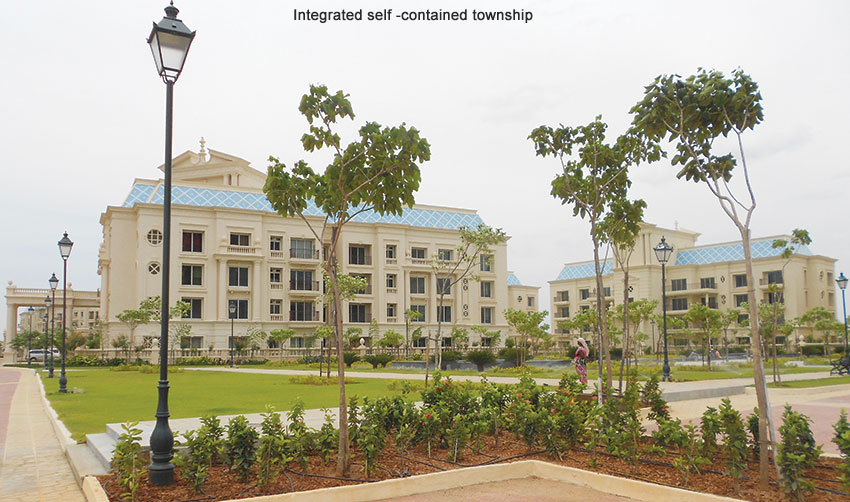
The approach to sustainable built environment is shortly being included as new Chapter 11 of NBC and the green building initiatives for the buildings and environment will receive a further fillip, with the adoption of NBC provisions.
Propagation through Audio-visual and other Mass Media
In the context of large scale damages due to disasters and more so during the recent Uttarakhand floods destroying settlements, there is an imminent need to give guidance to local population on the right and safe way of building, respecting environment.
It is necessary that these technologies are given appropriate projection using the powerful electronic and print media. This would help give appropriate information on the right type of materials and proven technologies, with information on the various applications and visuals of the demonstration buildings shown side-by-side. The "demand side" projection of the efficacy of use of the cost–effective technologies among general public will significantly contribute to its application and acceptance by families of middle and low-income groups. Successful application of such options will send a powerful signal out to millions of aspiring homeowners.
Building Materials Estates and Super Markets
With a view to encourage entrepreneurs to come forward for the manufacture of various cost-effective building materials and technologies, State Governments/ Entrepreneurs may help setup Building Material Estates and also appropriate building material component sales outlet centres through the Building Materials Super Markets on the line of "Home Stores" in developing countries.
Thrust on Agro-Industrial Waste Based Building Materials
With a view to encourage the manufacture of building materials and technologies and utilization of agricultural and industrial wastes, the Government should come forward for giving all possible incentives for such initiatives, including exemption of Customs Duty/Excise Duty as well as Sales Tax and other charges. Further, the financial institutions should also support Building Material initiatives through equity support/term loan for alternative building material industries and propagation initiatives. Since these options provide holistic solutions and are environment-friendly, ecologically appropriate and energy saving, the use of application in construction should be increasingly promoted.
Financing Institutions to recognise Alternative technologies for Loans
Large number of Housing Finance Institutions (HFIs) and Development Funding Institutions, could encourage introduction of various cost-effective building materials and technologies for housing and building construction projects. It is necessary that a technology folio is made available to the HFIs, so that during the sanction of individual loans, the same does not get held up due to introduction of these technologies. This will contribute to the techno-financing regime for advancement in the application of appropriate building technologies. Possible incentives in interest rate reduction for green technologies would help.
Green Building Movement
The Green Building Movement, which has commenced in India from 2001 through initial IGBC efforts, has sensitized practicing professionals and builders of the efficacy for use of sustainable development practices in the planning, design, construction and operation phases.
The available Green Building Rating systems help the users to differentiate the product value in terms of environment conscious living.










